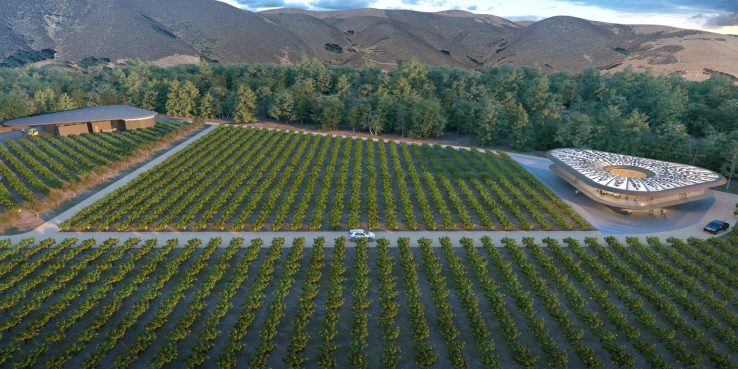
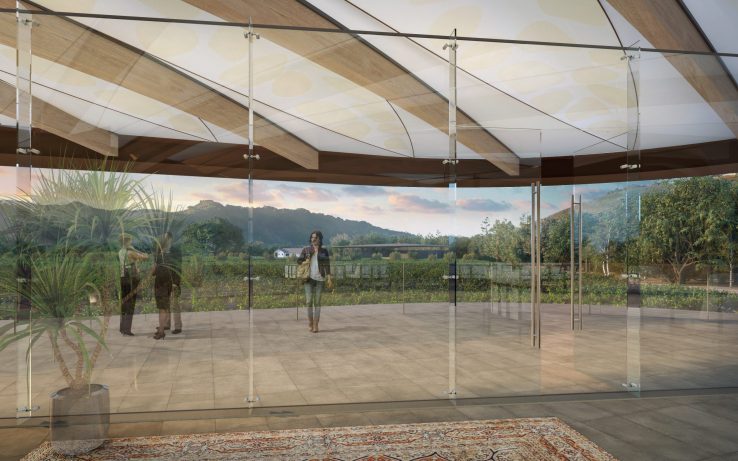
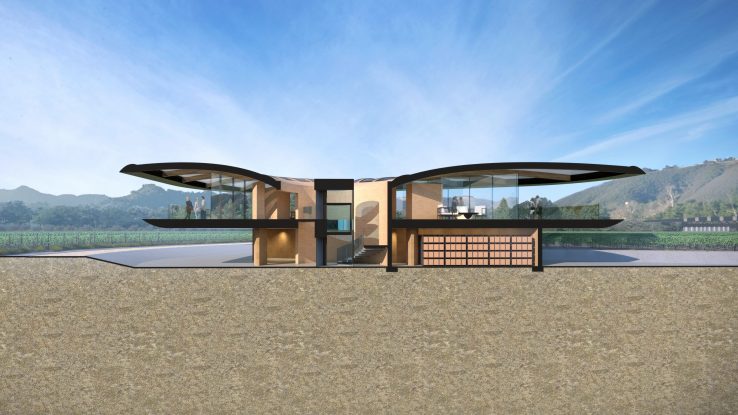
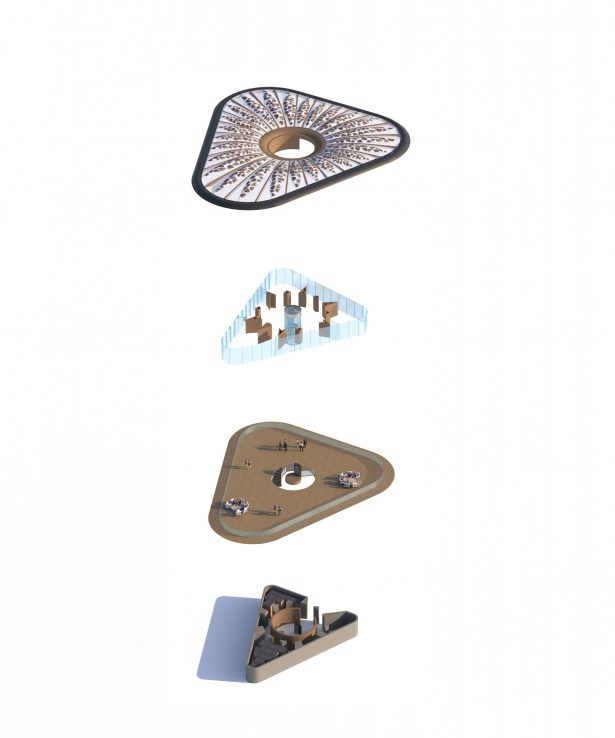
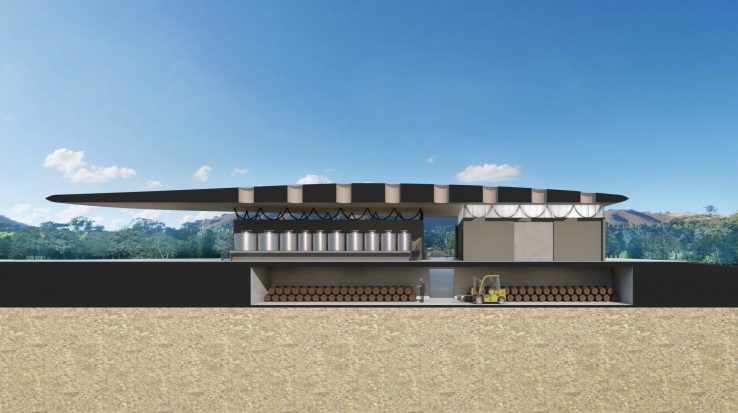





The clients for this project – a production winery and accompanying hospitality center set amid the rolling hills of Morgan Hill – asked for a contemporary set of structures that would provide maximum transparency and visual impact while minimizing carbon footprint.
Parametric design is a relational design method in which equations establish the relationship between design intent and design response. Playing with form and impacts, the design team is able to experiment, explore and test options quickly and efficiently, while pushing creative boundaries. The results are organic, algorithmically-derived forms with an attention to minimizing carbon impact naturally layered in.
The elegant solution for this project is a pair of organic structures that directly relate to one another across the vineyards. The organically-shaped structures are modern and sleek, with large rooflines and the lowest possible embodied carbon footprint. The placement of two softly triangular structures, set at a small distance from one another, was inspired by the big bang theory: the two structures, related but distinct, seem to have exploded apart from one another, landing on opposite sides of the site.
The gently rounded form of the hospitality building hovers above the vineyards, set upon a plinth of rammed earth that is semi-recessed to minimize its vertical profile and enhance its connection to the site. Visitors enter via a curving staircase within this central pedestal, emerging onto a second-floor hospitality space surrounded by an expansive open terrace lined with glass guardrails to take full advantage of the surrounding views. The roof’s parametric shape naturally curves inward toward a central oculus, which lights the stairway, as well as the glass elevator that simultaneously meets ADA requirements and provides a dramatic alternate journey to the second-floor hospitality spaces.
Inspired by Frei Otto’s soap film studies, which explored how to achieve strength of form with a minimum of surface area, the arching roofline is made of EFTE – a very lightweight material. Doubled and filled with an internal pocket of air for insulation, the roof’s petal-like sections are supported by curved glue-lam beams and embedded with solar arrays. All building services are incorporated into the floor of the deck, distributing their weight at the lowest possible point.
The production building, set across the vineyards, is designed to straddle the access road. Rather than curving around the building to deliver grapes, vehicles deliver their loads directly through the building to the covered crush pad. The open-air structure utilizes national convection and airflow.